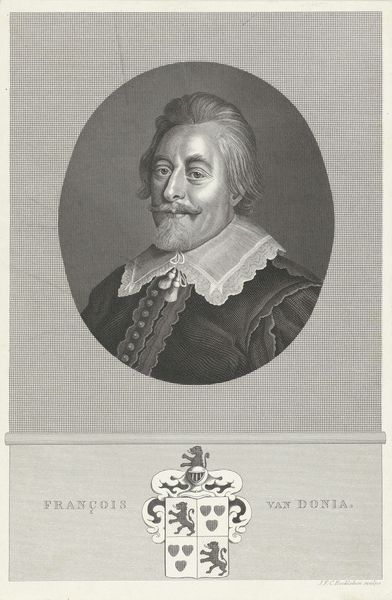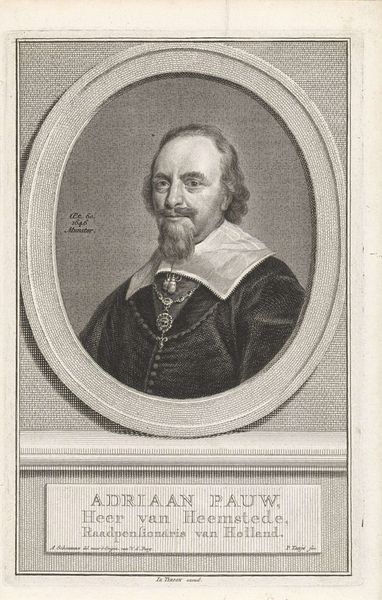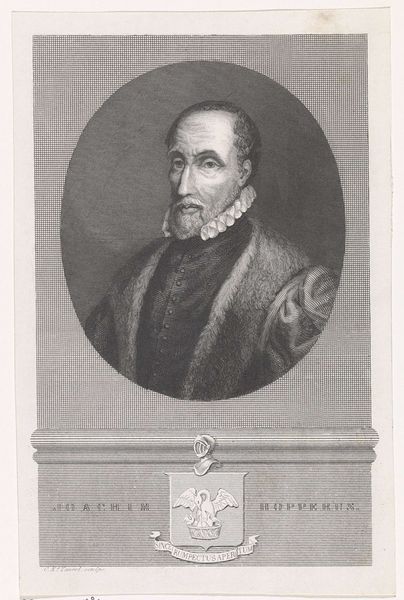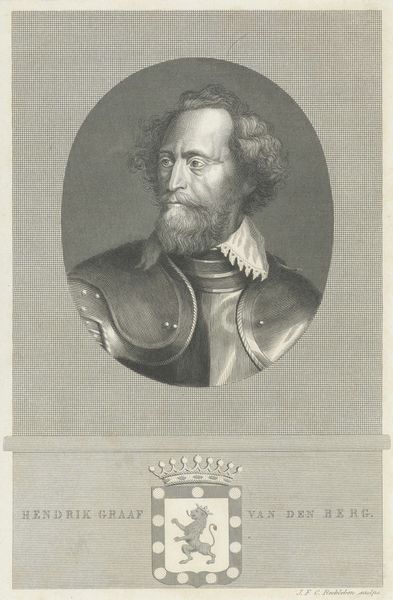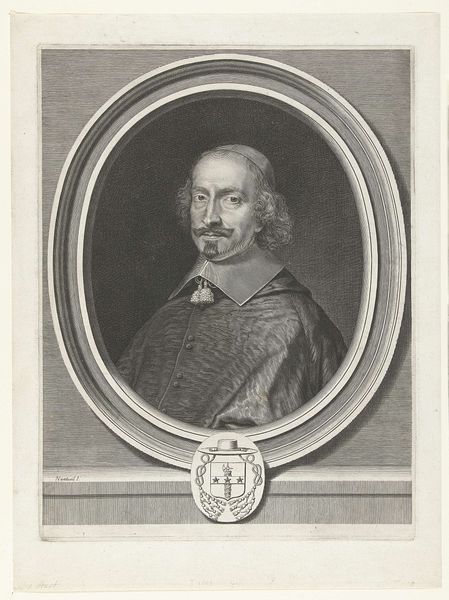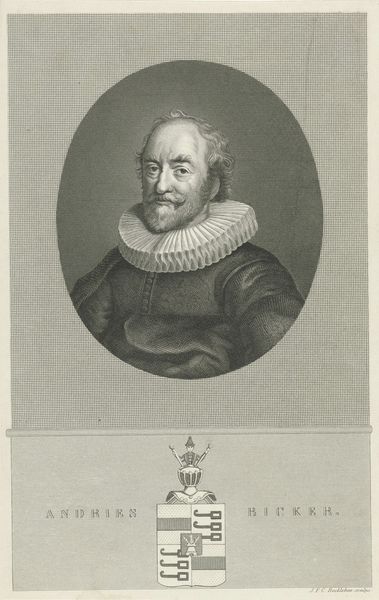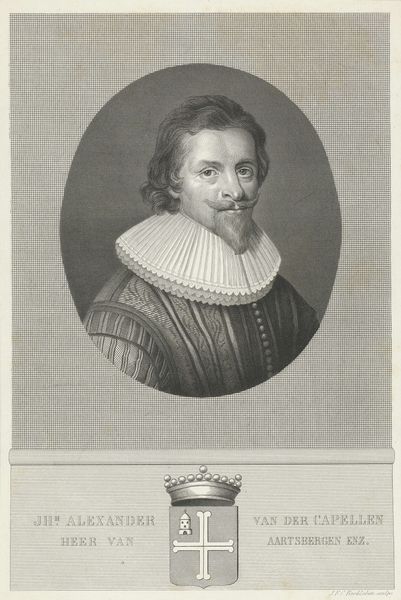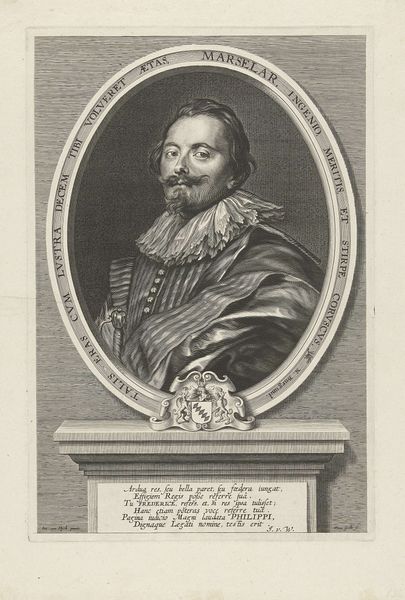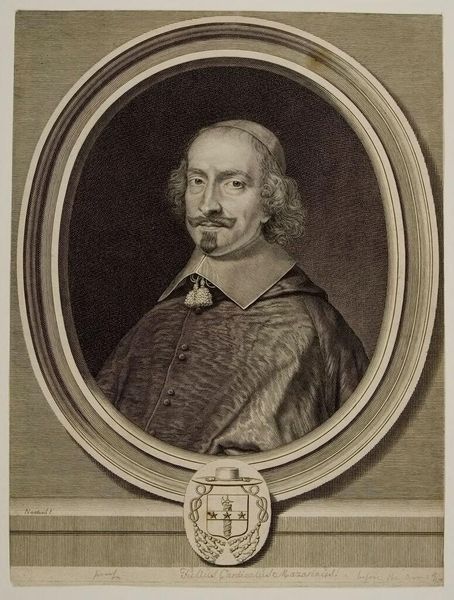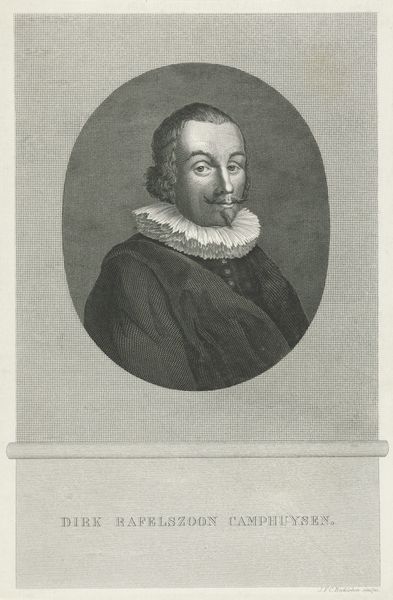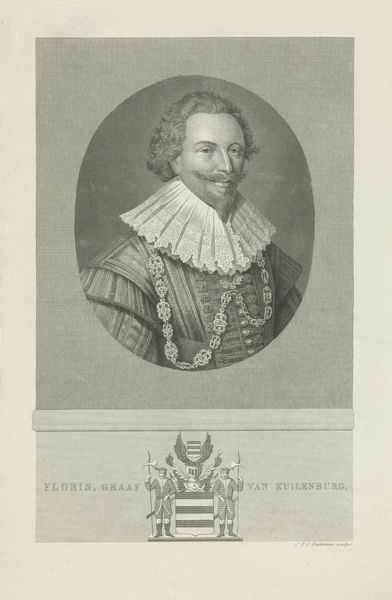
print, engraving
#
portrait
#
dutch-golden-age
# print
#
old engraving style
#
archive photography
#
historical photography
#
historical fashion
#
19th century
#
history-painting
#
engraving
Dimensions: height 225 mm, width 144 mm
Copyright: Rijks Museum: Open Domain
Curator: Before us is a print titled "Portret van Adriaan Pauw," created between 1861 and 1863 by Jan Frederik Christiaan Reckleben. It resides here in the Rijksmuseum. Editor: My first impression is one of formality and reserve, even with the soft curls of his beard. The neutral grey and intricate detail convey a sense of dignity and authority but also a sort of removedness. Curator: Exactly. Reckleben chose engraving to capture the essence of Pauw, which speaks to tradition and perhaps a deliberate harkening back to the Dutch Golden Age, a time of significant political and economic power for the Netherlands. Note the symbolic elements—the coat of arms. Editor: Ah yes, the family crest! These emblems often carry a lot of weight. The arrangement suggests a concern with lineage and the consolidation of power. These visual signifiers root him firmly within a specific socio-political class. The decorations—that chain—aren't merely decorative; they denote status. Curator: Precisely. Medallions like that symbolize more than wealth; they represent merit and service to the state, reflecting not only on the individual but on the historical narrative of power itself. And Reckleben, by including such potent imagery, reinforces that narrative. Editor: I can’t help but consider who this portrait was made for. While it certainly monumentalizes Pauw's legacy, was it aimed at perpetuating an exclusionary image of leadership? Was it meant to reinforce established social hierarchies? Curator: A pertinent question. The intended audience significantly shapes its meaning. During that time, prints often served didactic purposes, solidifying existing structures, or indeed inspiring different interpretations, which perhaps Reckleben intended. It serves not just to show us Pauw but also the values he ostensibly embodied. It speaks volumes, both visually and psychologically. Editor: It leaves me reflecting on how these images from the past inform contemporary understanding of leadership and power. Curator: A powerful connection to draw. Editor: Indeed. Curator: Absolutely. The interplay of image and symbol in transmitting ideals. Editor: Makes one wonder how his legacy endures, even through the etching of this print.
Comments
No comments
Be the first to comment and join the conversation on the ultimate creative platform.
